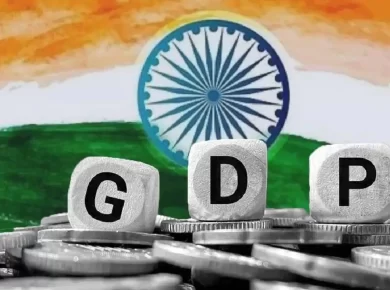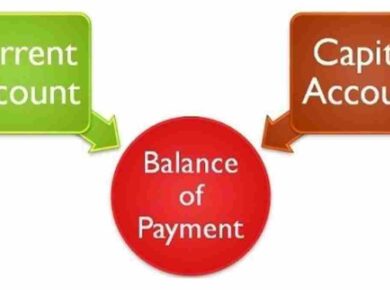Financial Institutions in India
Points to Ponder in This Article – Understand why RBI was setup and with what responsibilities. Also understand the functioning of Nabard & how it helps rural areas & SHGs. Meanwhile some of the responsibilities of RBI like forming monetary policy has been diluted.
Also, deposit guarantee and insurance corporation is in talks of being replaced by another organization for the same function as it performs. Hence, just understand the basics why these organizations are required.
Reserve Bank of India (RBI)
The Reserve Bank of India (RBI) is India’s central banking institution, which controls the monetary policy of the Indian rupee. It was established on 1 April 1935 during British Raj in accordance with the provisions of the Reserve Bank of India Act, 1934. The RBI plays an important part in the development strategy of the Government of India.
- The RBI has been fully owned by the Government of India since its nationalization in 1949.
- The Central Office of the RBI initially established in Calcutta but was permanently moved to Bombay in 1937.
- The general superintendence and direction of the RBI is entrusted with the 21-member Central Board of Directors: the Governor, four Deputy Governors, two Finance Ministry representative, ten government-nominated directors to represent important elements from India’s economy, and four directors to represent local boards headquartered at Mumbai, Kolkata, Chennai and New Delhi.
- The Preamble of the RBI describes its basic functions to regulate the issue of bank notes, keep reserves to secure monetary stability in India, and generally to operate the currency and credit system in the best interests of the country.
- RBI, founded a subsidiary company – Bhartiya Reserve Bank Note Mudran Limited – in February 1995 to produce banknotes (Karnataka & Bengal)
- Sir Osborne Smith was the first Governor of the Reserve Bank
- Chintaman Dwarkanath Deshmukh, a member of the Indian Civil Service, was the first Indian Governor of the Bank. (Youngest)

Main functions of Reserve Bank of India (RBI)
- Bank of issue (Supervise & make policies for other banks)
- Monetary authority
- Regulator and supervisor of the financial system
- Managerial of exchange control
- Issuer of currency
- Manager of foreign exchange
National Bank for Agriculture and Rural Development (NABARD)
- NABARD is an apex development bank in India having headquarters based in Mumbai (Maharashtra) and other branches are all over the country.
- Accredited with “matters concerning policy, planning and operations in the field of credit for agriculture & other economic activities in rural areas in India”
- NABARD was established on the recommendations of Shivaraman Committee on 12 July 1982 to implement.
NABARD was established in terms of the Preamble to the Act, “for providing credit for the promotion of agriculture, small scale industries, cottage and village industries, handicrafts and other rural crafts and other allied economic activities in rural areas with a view to promoting IRDP and securing prosperity of rural areas and for matters connected therewith in incidental thereto”.
- Known for its ‘SHG Bank Linkage Programme’ which encourages India’s banks to lend to Self Help Group (SHGs)
- Lends it downwards to State Cooperative banks (SCB), Regional Rural banks (RRBs), Microfinance institutions, cooperative credit societies etc. That’s how farmers, villagers, cottage/handicraft, self-help group (SHG) get loans at reasonable interest rate.
- Acts as the regulatory authority for cooperative banks and regional rural banks
- Operates the Rural Infrastructure Development Fund (RIDF)
Rural Infrastructure Development Fund (RIDF)
- Started in mid 90s > NABARD operates Rural Infrastructure Development Fund (RIDF).
- Banks who do not meet their Priority sector lending requirements, provide money to this rural infrastructure development fund.
- This fund provides cheap loans to states and state-owned corporations, so they can quickly complete projects related to
- Medium and minor irrigation, watershed management
- Soil conservation, Flood Protect in; Forest Development.
- Cold storage, Community Irrigation wells for the village as a whole; Village Knowledge Centres.
- Desalination plants in coastal areas.
- Building schools, Anganwadi Centres etc.
- Building toilet blocks in existing schools, especially for girls
- Rural Roads, Bridges and other forms of rural infrastructure
Deposit Insurance and Credit Guarantee Corporation (DICGC)
- HQ: Mumbai, setup by act of parliament (means it is not a company registered under companies act)
- RBI completely owns DICGC & one of 4 dy. Governors acts as the chairman of DICGC.
- From the name itself, we can see it has two functions
- Deposit insurance
- Credit guarantee
Deposit Insurance
- Banks have to keep aside some money as ‘backup’, in CRR & SLR but in case of massive crisis or when RBI cancels banks license, to protect the bank customers, government enacted Deposit Insurance Act
- Under this act, every bank (commercial or cooperative) has to compulsorily take insurance from DICGC & has to pay the premium to DICGC. So, when bank fails / shuts down, DICGC will give money to depositors (maximum 1 lakh per depositor).
- RBI can inspect the banks on DICGC’s behalf to make sure they’ve taken adequate precautions in running the bank.
Credit Guarantee
- DICGS ‘guarantee’ to bank, so, if a farmer doesn’t repay his loan, we’ll pay you (Bank) the loan money, one type of insurance.
Financial intermediaries
- Institutions that channel funds from People to Business / Government (b/w surplus & deficit agents) are called financial intermediaries.
- Financial intermediaries invest in diversified portfolios; and hence suffer less risk compared to an individual investor.
- Financial intermediaries are supervised & monitored by regulators like RBI, SEBI, IRDA etc.
For more updates, visit www.iasmania.com. Please share your thoughts and comments.
If you’re passionate about building a successful blogging website, check out this helpful guide at Coding Tag – How to Start a Successful Blog. It offers practical steps and expert tips to kickstart your blogging journey!











3 comments
very good effort
Excellent Post
Hi, Nice things to know about these loans, I know a place which is one of the best loan providers who has helped lot of people in getting their low interest rate loans & fast cash loans without any hassle. I know that there are lot of loan providers we can easily found but these are the best among them.